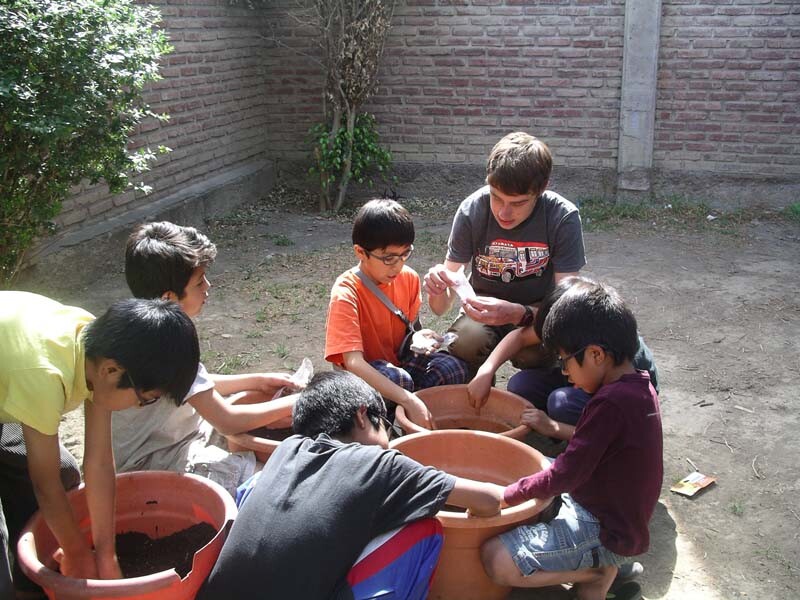
by Logan Pratico
One problem that many volunteers face in their placements is how to make their work sustainable.
Because many volunteers only come for short periods of time, many people struggle to find a way to make their impacts last after they leave. This is a problem that not only affects the volunteer but also the organization that they are working with, who typically do not receive the maximum amount of support that they could.
Finding a way to make projects sustainable after you leave is not always easy. Many volunteers have worked very hard at making their projects sustainable, only to find out that it completely falls apart after they leave. The best example of this lies in teaching English. In Cochabamba, there are several different non-profit organizations that are centered around helping less fortunate children throughout the city. When volunteers arrive at one of these organizations, the first thing that they are asked to do is help teach English. This system has some really great advantages because it allows the children to learn English from someone who speaks it as a first language, or has spoken it for most of their lives. However, due to the constant flow of volunteers coming in and out of Cochabamba, many of the kids lack a consistent source of education in English, which leads to many gaps in their language skills. As a result, students aged 3 to 12 have about the same English experience.
One volunteer was presented with this problem and really struggled to make his English class a sustainable and continuous source of education after he left. In order to correct this problem he created an English syllabus filled with different lesson plans and activities so that the next volunteers could simply pick up where the last ones left off. This is a perfect example of how making your work sustainable is often just as important as doing it in the first place.
What this volunteer did is a perfect example of how making your work sustainable is a key point of making your work impactful while volunteering. However, many times it is easier said than done. One problem that many volunteers have struggled with is how to make their financial donations sustainable after they leave. Non-profits are notorious for lacking the financial skills that it takes to keep themselves afloat. As a result, when new volunteers arrive, they often rely on the funds that those volunteers provide for things like food and other necessities. In many cases, the organization will even start to include the funds from the volunteers in their budget leading to a heavy reliance on this money. The problem with this is that the money that comes from volunteers is not consistent enough to rely on. So when it comes time for the volunteer to leave, many of the organizations find themselves struggling to provide many of the basic necessities that they need. This is a difficult challenge to face. Many organizations rely on governmental funding, however that can often be just as unstable as volunteer funding. The best correction that I have found to this problem is to take on volunteers with experience in financial planning in order to help them organize their budget, and create a system in which they can make their funding last as long as possible.
So how can we make our impact while volunteering sustainable? By planning ahead, by seeing where the problem lies, finding a way to fix it, and then by taking it a step further and making sure that that problem doesn’t reemerge after we leave. But whose role is it to take on this problem? Both the volunteer and the organization have to work together to reach this goal, because without help from both parties achieving sustainable development is impossible. Fixing a problem does nothing if everything that you worked to change unravels after you leave. Finding a way to make your work sustainable is no easy task, it often takes a lot of creativity and problem solving. But it is very much something that is necessary in order to make a deep impact while volunteering.
